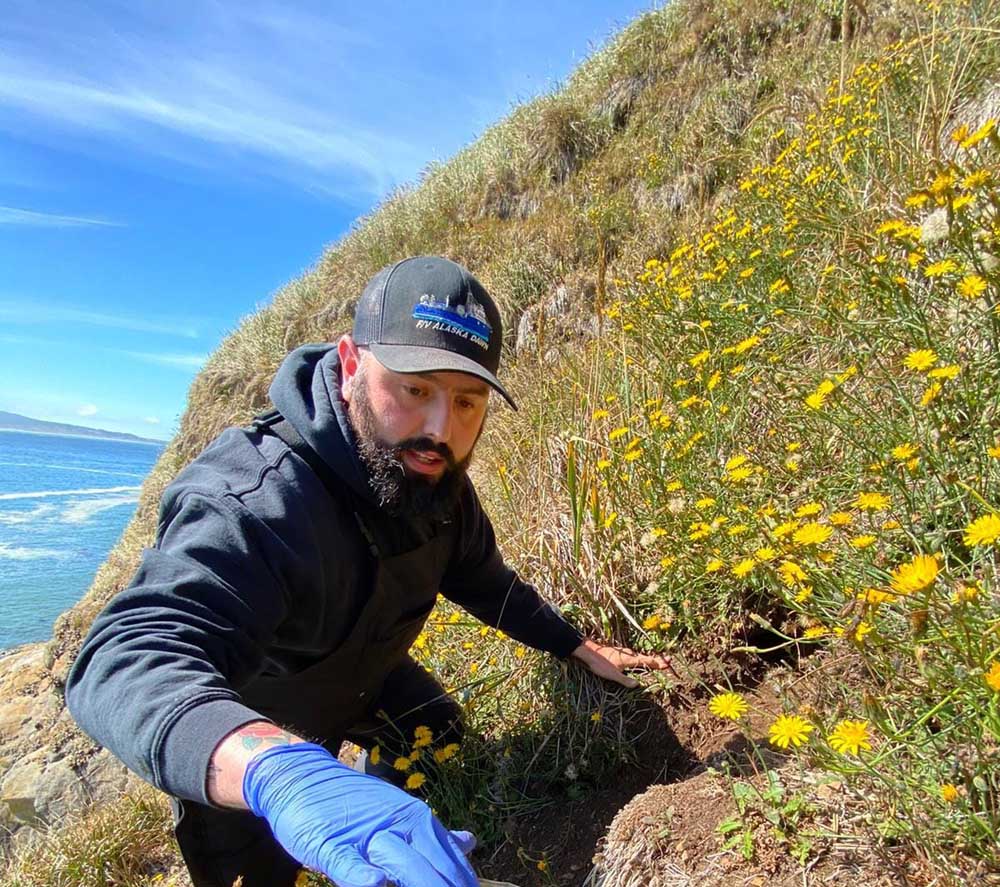Seen from Seaside: Dolinajec works to protect rivers, streams
Published 9:44 am Friday, April 21, 2023

- Noah Dolinajec studying habitat along the Oregon Coast.
For Noah Dolinajec, growing up in Portland and surrounded by urban life, being able to have a place like the North Coast to go to was like a healing retreat.
The executive director of the Necanicum Watershed Council in Seaside now works to help preserve the region’s environmental health.
“While my wife and I live in Astoria, I see Seaside as the community that I am working to provide a service for, protecting the rivers, streams and habitats that both our wildlife and people rely on,” he said. “My mom moved here after my dad passed, and so Seaside is a very important place to me on a personal level.”
Born and raised in the Goose Hollow neighborhood of Portland, Dolinajec played junior hockey into his early 20s and “lived all over the place.”
He attended Portland State University, but remained unsure about his career path.
“Hockey really dominated,” he said. “I thought that that’s what I was going to do for a long time.”
Dolinajec received an undergraduate degree in mathematics and went to graduate school in Belgium for astrophysics. “But it just wasn’t for me,” he said. “It’s very, very abstract.”
His girlfriend and future wife, Erin, joined him overseas, studying in a physical therapy program. They lived in Belgium for 3 1/2 years.
“I always thought that I really wanted to do research and be in academia,” he said. “And then I started experiencing some of the hurdles in academia and feeling like I wasn’t personally contributing to problem-solving.”
He wanted to connect science with the “people part of it,” he said. “I tried to find a route out of research that still allowed me to be part of science,” he said, “but not just focused only on the research.”
Dolinajec got an internship opportunity with Oregon State University, doing research on gray whales in Port Orford. “That opportunity really solidified the route that I wanted to go,” he said.
He did fieldwork with gray whales, going out in kayaks to sample feeding sites.
“One part of the project was we had this little digital camera,” he said. “When the whales would surface, we tried to snap pictures of them as quickly as we could.”
He matched his findings with a database to identify individual whales.
“What I took away from that experience most was how much I care about the Oregon Coast,” Dolinajec said. “It was great for me to get some of that technical hands-on experience, but it was more of a — I know this word is kind of trite — but like a spiritual experience for me, somehow being connected with the journey that they were taking, even in the most minor way possible. It was eye-opening.”
He followed whale work with a project at the university’s seabird oceanography lab, doing prey studies for tufted puffins and other coastal birds. He enjoyed the community science aspect of it, enlisting amateur photographers along the coast to take pictures of birds carrying prey in their bills or talons.
That project became the basis for his master’s degree, which he plans to complete this fall.
Dolinajec started his environmental career at the Necanicum Watershed Council. “I’ve realized I’ve cared about this place a long time,” he said.
The watershed comprises the headwaters of the Necanicum River coming off Humbug Mountain, he said, with its own tributaries and sub-watersheds that flow into it. The Necanicum is a relatively short river in terms of length. Tributaries like the Neacoxie and the Neawanna flow into it, among many others in the upper parts of the watershed.
The watershed council hopes to get a broader picture of water quality and fish and wildlife distribution.
“With climate change, we’re seeing the impacts of how that’s affecting not just the North Coast, but the whole state of Oregon,” Dolinajec said.
Seeing how it is changing will help define the way the watershed council addresses potential problems.
“We’re working with an ecological engineering firm to design a 20-foot culvert that will allow for fish passage and one of Seaside’s urban streams to regain some of its natural tidal influence and hopefully get some fish being able to get back up into Coho Creek,” he said. “That’s a big problem not here, but in the whole state — and really everywhere.”
When water flow is changing, having a healthy flood plain and wetlands is important for the species using that waterway, he said.
A pollinator habitat project is underway, along with wetlands planting at Shangrila with the North Coast Land Conservancy designed to help minimize flooding and keep the land healthy.
He hopes to take on some larger projects and get to a point where the watershed council can increase staff levels.
“I can feel us growing right now,” Dolinajec said. “But we’re not quite slipping into the new shoe yet.”

